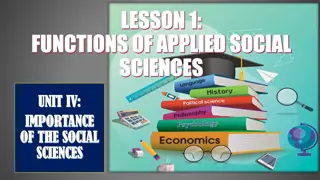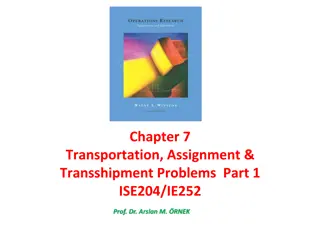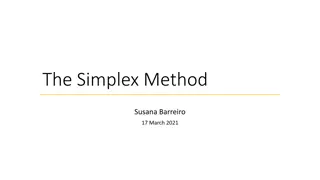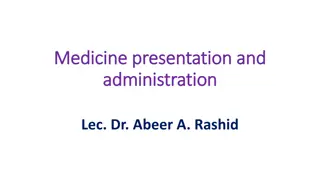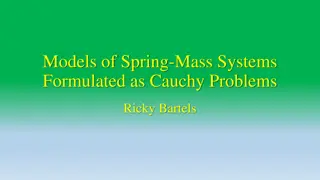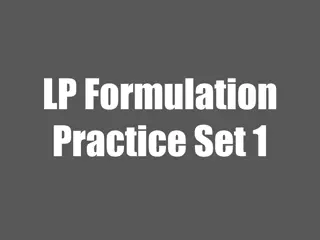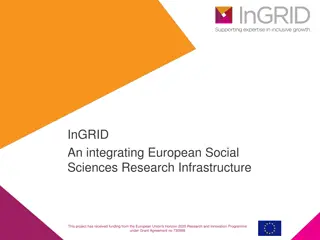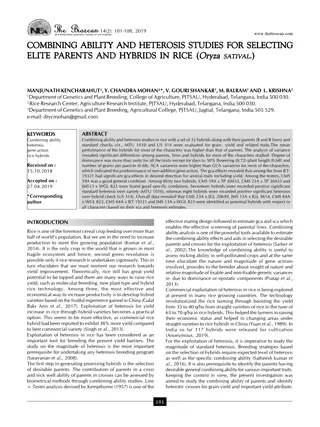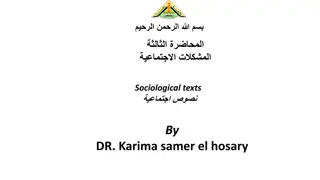Understanding the Formulation of Research Problems in Social Sciences
A research problem is a crucial statement that highlights an area of concern or a troubling question, necessitating deliberate investigation. This article discusses the purpose and identification of research problems, along with their characteristics and steps in formulating them, emphasizing the importance of clarity and relevance in academic research.
Download Presentation

Please find below an Image/Link to download the presentation.
The content on the website is provided AS IS for your information and personal use only. It may not be sold, licensed, or shared on other websites without obtaining consent from the author. Download presentation by click this link. If you encounter any issues during the download, it is possible that the publisher has removed the file from their server.
E N D
Presentation Transcript
Research Problem A research problem is a statement about an area of concern, a condition to be improved, a difficulty to be eliminated, or a troubling question that exists in scholarly literature, in theory, or in practice that points to the need for meaningful understanding and deliberate investigation. In some social science disciplines the research problem is typically posed in the form of a question. A research problem does not state how to do something, offer a vague or broad proposition, or present a value question.
Purpose of Research Problem Introduce the reader to the importance of the topic being studied. The reader is oriented to the significance of the study and the research questions or hypotheses to follow. Places the problem into a particular context that defines the parameters of what is to be investigated. Provides the framework for reporting the results and indicates what is probably necessary to conduct the study and explain how the findings will present this information.
Identification of Research Problem After choosing a specific topic for your academic paper, you need to state it as a clear research problem that identifies all the issues that you ll address. It s not always simple for students to formulate it. In some fields, they may end up spending a lot of time thinking, exploring, and studying before getting a clear idea of what research questions to answer.
Characteristics of research problem Reflecting on important issues or needs; Basing on factual evidence (it s non-hypothetical); Being manageable and relevant; Suggesting a testable and meaningful hypothesis (avoiding useless answers).
Steps in Formulating Research Problem Select interested sub-area Identify broad field Dissect the subareas. Assess objective Formulate objective Raise research questions Double check
Steps in Formulating Research Problem Identify broad field This is a great idea to thinking about the subject area of your interest. You should identify the field in which you would like to work a long time after your academic study or graduation. It will help you tremendously to get an interesting research topic.
Steps in Formulating Research Problem Dissect the subareas In this stage, researcher need to dissect and specify your research broad study area into some subareas.
Steps in Formulating Research Problem Select interested sub-area It is almost impossible to study all subareas. That s why you must identify your area of interest. You should select issues in which you are passionate about. Your interest must be the most important determinant of your research study. Once you selected your research study of interest, you should delete other subareas in which you do not feel interested. Keep in mind that if you lose your interest in your research study it won t bring any results eventually.
Steps in Formulating Research Problem Raise research questions In this step in formulating a research problem, you would point out your research questions under the area of interest as you decided in the previous stage. If you select unemployment as your study area, your questions might be how unemployment impacts on individual social status? How it affects social stability? How it creates frustration on individuals?
Steps in Formulating Research Problem Formulate objective Set out conspicuously your research root objectives and sub- objectives. Research objectives essentially come from research questions.
Steps in Formulating Research Problem Assess objective You should evaluate your objectives to make sure the possibility of attaining them through your research study. Assess your objectives in terms of time, budget, resources, and technical expertise at your hand. You should also assess your research questions in light of reality. Determine what outcome will bring your study. If you can assess accurately the purpose of the research study it will bring significant results in the long run. In fact, research objectives determine the value of the study you are going to work out.
Steps in Formulating Research Problem Double check Before you go on research work you should review all steps in formulating a research problem and all the things that you have done till now for the purpose of your research study.
Sources of Research Problem Personal Experience Practical Experience Critical appraisal of literature Previous research Existing theories Consumer feedback Performance improvement activities Social issues Brainstorming Intuition Exposure to field situations Consultations with experts
Sources of Research Problem Personal Experience :- Day-to-day personal experience of a researcher may serve as good source of ideas to formulate a research problem. Practical experience :- Nurses get plenty of ideas to formulate research problems from their clinical experiences. Every curious nurse has several questions to be answered that are encountered during clinical experience.
Sources of Research Problem Critical appraisal of literature: When we critically study books and articles relating to the subject of our interest, including research reports, opinion articles, and summaries of clinical issues, pertinent questions may arise in our mind. These may strike reader's mind indirectly by stimulating imagination and directly by stating what additional research is needed.
Sources of Research Problem Previous research: A body of knowledge should be developed on a sound foundation of research findings. Usually, at the end of a research, further research problems are suggested, based on the shortcomings of previous research, which can be investigated. In nursing profession, not much research has been yet done; therefore, this profession needs researchers who are willing to replicate or repeat other studies on different samples and settings where all the essential elements of the original study are held intact. Further refinements may be made in the experimental treatments, or more appropriate outcome measures may be identified.
Sources of Research Problem Existing theories: Research is a process of theory development and theory testing. Nurses use many theories from other disciplines in their practices. If an existing theory is used in developing a researchable problem, a specific statement from the theory must be isolated. Generally, a part or parts of the theory are subjected to testing in the clinical situation. The testing of an existing theory is definitely needed in nursing; therefore, they serve as good sources of research problems.
Sources of Research Problem Consumer feedback: Research problems may be generated from the results of activities aimed to solicit patient feedback. Performance improvement activities: The performance improvement activities, also known as quality improvement activities, are used to improve processes and outcomes to meet regulatory requirement. In the process of performance activities, several issues merge that require answers through research. Thus performance improvement activities also serve as an important source of research problem.
Sources of Research Problem Social issues: Sometimes, topics are suggested by more global contemporary social or political issues of relevance to the health care community. Brainstorming: Brainstorming sessions are good techniques to find new questions, where an intensified discussion among interested people of the profession is conducted to find more ideas to formulate a good research problem.
Sources of Research Problem Intuition: Traditionally, intuitions are considered good sources of knowledge as well as sources to find new research problems. It is believed that the reflective mind is a good source of ideas, which may be used to formulate a good research problem. Exposure to field situations: During field exposure, researchers get variety of experiences, which may provide plenty of ideas to formulate research problems.
Sources of Research Problem Consultations with experts: Experts are believed to have sound experience of their respective field, which may suggest a significant problem to be studied. In addition, experts may help in finding a current problem of discipline to be solved, which may serve as basis for formulation of research problem.
Literature Review A literature review is a comprehensive summary of previous research on a topic. The literature review surveys scholarly articles, books, and other sources relevant to a particular area of research. The review should enumerate, describe, summarize, objectively evaluate and clarify this previous research. It should give a theoretical base for the research and help you (the author) determine the nature of your research. The literature review acknowledges the work of previous researchers, and in so doing, assures the reader that your work has been well conceived.
Literature Review A literature review creates a "landscape" for the reader, giving her or him a full understanding of the developments in the field. This landscape informs the reader that the author has indeed assimilated all (or the vast majority of) previous, significant works in the field into her or his research. It is assumed that by mentioning a previous work in the field of study, that the author has read, evaluated, and assimilated that work into the work at hand.
Features of Good Literature Review A good literature review is NOT simply a list describing or summarizing several articles; a literature review is discursive prose which proceeds to a conclusion by reason or argument. A good literature review shows signs of synthesis and understanding of the topic. There should be strong evidence of analytical thinking shown through the connections you make between the literature being reviewed.
Identification of Research Gap Research Gap:- A research gap is a question or a problem that has not been answered by any of the existing studies or research within your field.
Identification of Research Gap Use digital tools to seek out popular topics or most cited research papers Look for inspiration in published literature Seek help from your research advisor Check the websites of influential journals Make a note of your queries Research each question



